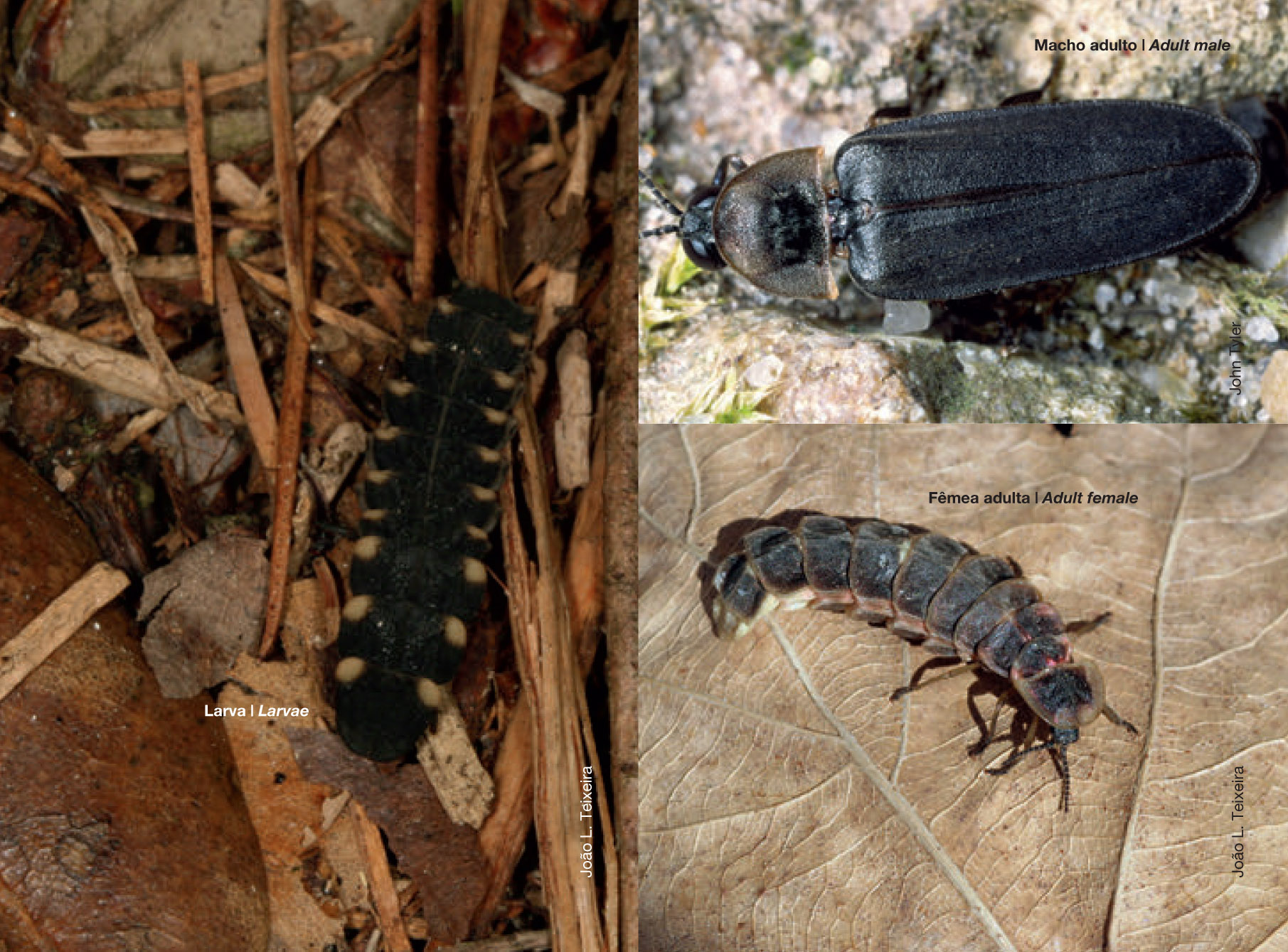Lampyris noctiluca (Linnaeus, 1767)
It’s easy to find larvae from March to June, even during the day, as they look for snails and slugs along the Discovery Trail of the Parque Biológico de Gaia. At night, especially when it is wet, more larvae can be seen glowing.
Behaviour and where to observe
Especially in its larval phase it can be easily confused with a close relative: Lampyris iberica. Similar to L. iberica (more details see above), the adult female looks like a developed larva and has no wings. Adult males can fly.
Adult females attract males by glowing from the glow organs in their terminal body segments from a fixed position on the soil, on a wall, or amidst the vegetation.
Adult female: Emits a yellow-green light (~550nm) from a light organ similar in shape and pattern like female L. iberica and Nyctophila reichii while on the ground, a wall or in the vegetation. Her body shape and colour are similar to L. iberica.
Adult male: Produces light from two glow spots inherited from the larval stage on its abdomens’ terminal segments when feeling threatened, but at night, while searching for females, he flies without emitting any light.
Size
Larva: The first instar (stage) can measure ± 4mm; the later instars can measure up to 30 mm. Male adult: around 13 to 15 mm. Female adult: around 15 to 20 mm.
Trivia
Exists in Portugal and its distribution reaches northern China, according to John Tyler (2004). Raphaël De Cock has found this species in southern Siberia, near Abakan, making this the firefly species with the most widespread distribution.
Text and photos - «Fireflies and Glow-worms of Portugal», 2015, ISBN n.º 978-989-98330-9-8.




